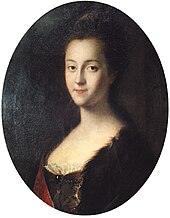Hello ladies and gents this the viking telling you that today we are going to talk about

 Catherine reformed the administration of Russian guberniyas, and many new cities and towns were founded on her orders. An admirer of Peter the Great, Catherine continued to modernise Russia along Western European lines. However, military conscription and the economy continued to depend on serfdom, and the increasing demands of the state and private landowners led to increased levels of reliance on serfs. This was one of the chief reasons behind several rebellions, including the large-scale Pugachev's Rebellion of cossacks and peasants.
Catherine reformed the administration of Russian guberniyas, and many new cities and towns were founded on her orders. An admirer of Peter the Great, Catherine continued to modernise Russia along Western European lines. However, military conscription and the economy continued to depend on serfdom, and the increasing demands of the state and private landowners led to increased levels of reliance on serfs. This was one of the chief reasons behind several rebellions, including the large-scale Pugachev's Rebellion of cossacks and peasants.
CATHERINE THE GREAT

Catherine II (Russian: Екатери́на Алексе́евна, romanized: Yekaterina Alekseyevna; 2 May [O.S. 21 April] 1729 – 17 November [O.S. 6 November] 1796), also known as Catherine the Great (Екатери́на Вели́кая, Yekaterina Velikaya), born Princess Sophie of Anhalt-Zerbst, was Empress of Russia from 1762 until 1796, the country's longest-ruling female leader. She came to power following a coup d'état that she organised—resulting in her husband, Peter III, being overthrown. Under her reign, Russia was revitalised; it grew larger and stronger and was recognised as one of the great powers of Europe.
In her accession to power and her rule of the empire, Catherine often relied on her noble favourites, most notably count Grigory Orlov and Grigory Potemkin. Assisted by highly successful generals such as Alexander Suvorov and Pyotr Rumyantsev, and admirals such as Fyodor Ushakov, she governed at a time when the Russian Empire was expanding rapidly by conquest and diplomacy. In the south, the Crimean Khanate was crushed following victories over the Ottoman Empire in the Russo–Turkish wars, and Russia colonised the territories of Novorossiya along the coasts of the Black and Azov Seas. In the west, the Polish–Lithuanian Commonwealth, ruled by Catherine's former lover, King Stanisław August Poniatowski, was eventually partitioned, with the Russian Empire gaining the largest share. In the east, Russia started to colonise Alaska, establishing Russian America.
 Catherine reformed the administration of Russian guberniyas, and many new cities and towns were founded on her orders. An admirer of Peter the Great, Catherine continued to modernise Russia along Western European lines. However, military conscription and the economy continued to depend on serfdom, and the increasing demands of the state and private landowners led to increased levels of reliance on serfs. This was one of the chief reasons behind several rebellions, including the large-scale Pugachev's Rebellion of cossacks and peasants.
Catherine reformed the administration of Russian guberniyas, and many new cities and towns were founded on her orders. An admirer of Peter the Great, Catherine continued to modernise Russia along Western European lines. However, military conscription and the economy continued to depend on serfdom, and the increasing demands of the state and private landowners led to increased levels of reliance on serfs. This was one of the chief reasons behind several rebellions, including the large-scale Pugachev's Rebellion of cossacks and peasants.
Catherine decided to have herself inoculated against smallpox by a Scottish doctor, Thomas Dimsdale. While this was considered a controversial method at the time, she succeeded. Her son Pavel was later inoculated as well. Catherine then sought to have inoculations throughout her empire stating: "My objective was, through my example, to save from death the multitude of my subjects who, not knowing the value of this technique, and frightened of it, were left in danger". By 1800, approximately 2 million inoculations were administered in the Russian Empire.
The period of Catherine the Great's rule, the Catherinian Era, is considered the Golden Age of Russia. The Manifesto on Freedom of the Nobility, issued during the short reign of Peter III and confirmed by Catherine, freed Russian nobles from compulsory military or state service. Construction of many mansions of the nobility, in the classical style endorsed by the Empress, changed the face of the country. She enthusiastically supported the ideals of the Enlightenment and is often regarded as an enlightened despot. As a patron of the arts she presided over the age of the Russian Enlightenment, a period when the Smolny Institute for Noble Maidens [ru], the first state-financed higher education institution for women in Europe, was established.
I hope you liked this post and as always have a chilled day from th viking.
Inspiring
ReplyDelete